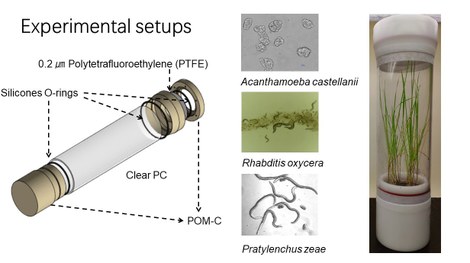The mechanisms and collective role of soil microfauna in soil nitrogen cycling
The process of nitrogen mineralization is mainly driven by soil bacteria and fungi, but it is generally accepted that soil fauna also play a significant role as they directly and indirectly regulate the activities of the primary decomposers (bacteria and fungi). Protists and nematodes are the two most abundant soil fauna that profoundly interact with bacteria and fungi due to their diversified feeding behaviour. Studies have estimated that about 25% of N mineralized in soil is by activities of protists and nematodes, but such estimates have never been verified in realistic experimental settings with a complex soil food web, and thus cannot be extrapolated to actual field conditions. This project aims to fill up this important knowledge gap by quantifying the role of protists and nematodes in soil nutrient cycling and plant growth at increasing complexity interaction levels: from a few representative species to the entire community, and from a simple food web to complex food webs. First, we want to refine a methodology to selectively remove soil nematodes with minimal disturbance of the native microflora. Second, we want to try to use gamma irradiation also to (selectively) remove soil protists, and study how soil protist communities can be reconstructed in irradiated soils. Afterwards, interactions between herbivorous and bacterivorous microfauna (nematodes and protists), bacteria, and plant roots will be investigated to gain a deeper mechanistic insight of plant-microfauna-microflora interactions, which could integrate the effect of herbivorous nematodes and the microbial loop interactions between bacterivorous microfauna and microflora. Finally, we aim to quantify the contribution of the entire nematode community on N mineralization and N2O emissions from native and exogenous OM in different soils.
